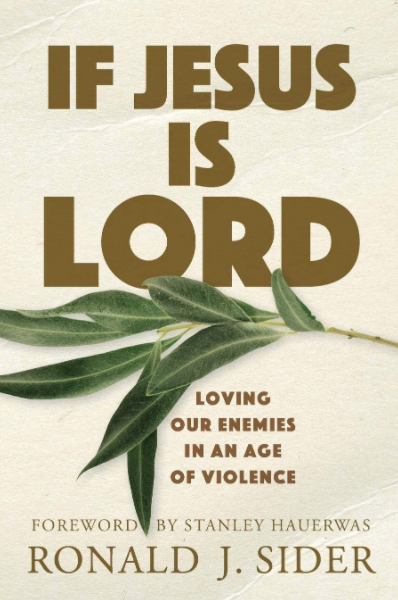Ronald J. Sider. If Jesus is Lord: Loving Enemies in an Age of Violence. Baker Academic, 2019. Xvi + 240 pages and Speak Your Peace: What the Bible Says About Loving Our Enemies. Herald Press, 2020. 199 pages.
Ted Grimsrud—July 11, 2020
Ron Sider, a longtime theology professor at Palmer Theological Seminary at Eastern University, has added to a long list of writings on social justice from an evangelical Christian perspective a kind of capstone on Christian pacifism. If Jesus is Lord is a solid, comprehensive account of biblically based Christian pacifism. Speak Your Peace is a somewhat more popularly written version of the same book. In this review, I will focus on the first of these two books.
What gives Sider’s books an authoritative heft is his long, sustained commitment to articulating and living out a Jesus-centered commitment to nonviolent engagement. Dating back to his influential bestseller Rich Christians in an Age of Hunger (first published in 1977 and revised numerous times, most recently in 2015), Sider has vigorously challenged his fellow evangelical Christians to take the wholistic gospel of peace seriously both with his writing and his organizing work with Evangelicals for Social Action. His first book on pacifism, Christ and Violence, was published way back in 1979 and has been followed by numerous others in the years since.
A Jesus-centered argument for pacifism
As would be expected (and this is a strength of the book), Sider moves immediately to the life and teaching of Jesus. The first four of the 14 chapters focus on Jesus’s practices and teachings that establish that the Bible’s core message is a message that calls upon believers to follow Jesus’s path of mercy, forgiveness, and nonviolent resistance to evil. Sider asserts that orthodox theology (which he defines especially in terms of an affirmation of Jesus’s divinity and identity as the second person of the trinity) actually strengthens the call to Christian pacifism. As the title of the book insists, “if Jesus is Lord” then his message of nonviolent engagement is a mandate for all who trust in him as their savior.
After developing the christological core of his pacifist convictions, Sider addresses a wide range of issues that often come up in discussions about pacifism. He shows how the rest of the New Testament emphasizes peace and in general reiterates Jesus’s message, while also refuting the claims that the rest of New Testament points away from pacifism. Continue reading




